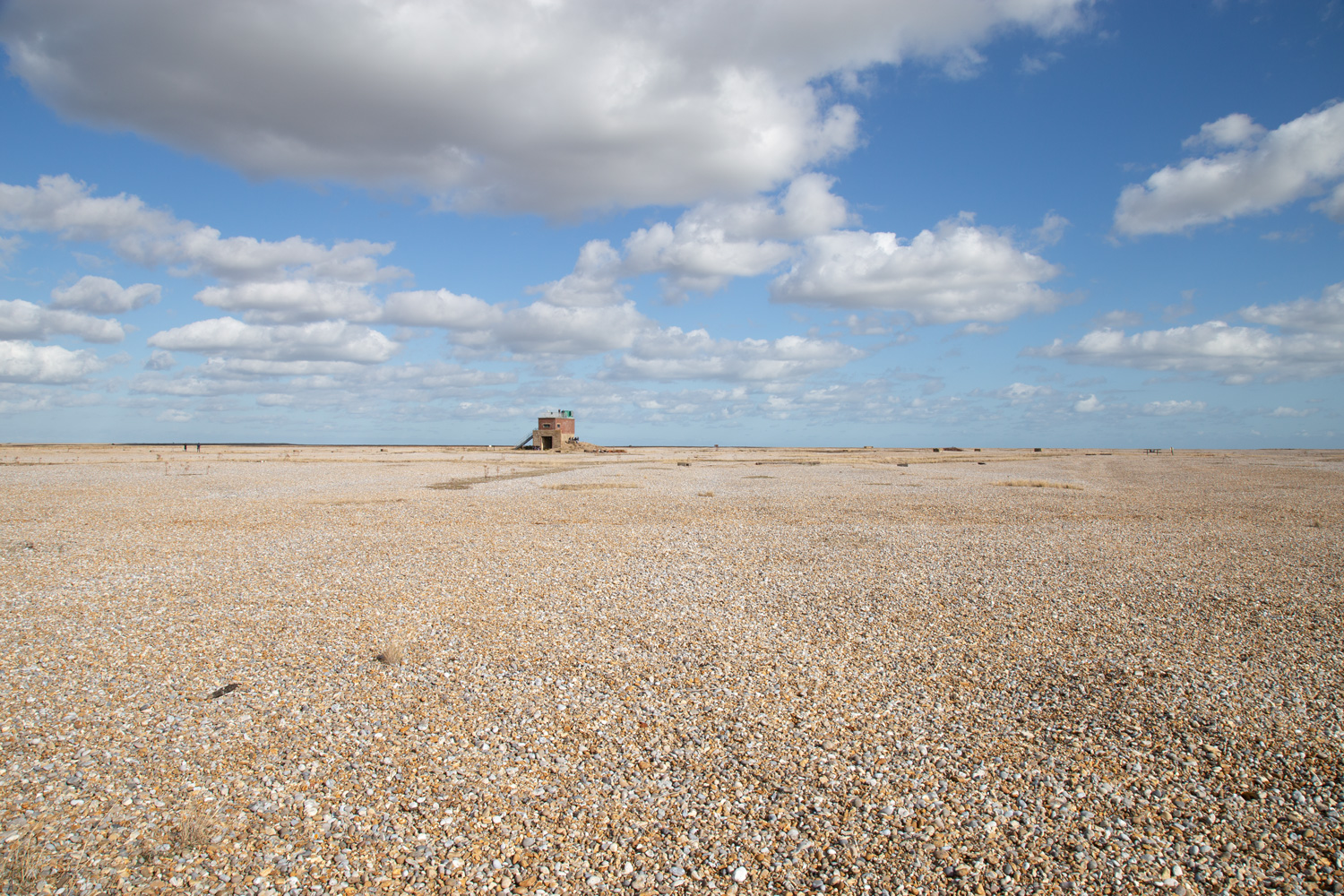
Bomb Ballistic Building
Orford Ness is a shingle spit just off the Suffolk coast. Despite being treeless and exposed, it is rich in wildlife. It is also a monument to some of mankind’s more destructive tendencies.
The area is now in the care of the National Trust. Birds, hares and otters thrive under the trust’s protection. A small boat takes visitors between the village of Orford and the Ness, trust volunteers are on hand to answer questions.
The last incumbent was less friendly to visitors and wildlife. For most of the 20th century, Orford Ness was used by the Ministry of Defence to develop and test ever more destructive weapon technologies. The Atomic Weapons Research Establishment used the site to create nuclear weapons in the post-Second World War period. The legacy of this occupation is a scattering of bizarre and foreboding buildings across the shingle.
The Bomb Ballistic Building is part of this legacy. The building is about 400 metres from the sea and was built to observe the path of bombs dropped from aircraft flying over the water. The data from these observations were used to improve the accuracy of bomb aiming, including atomic bombs.
I knew that Orford Ness was a strange place, a mixture of a nature reserve and a dark past. But as I walked across the Ness and around these buildings, I was reminded of how much effort and resources we humans put into killing each other. We have evolved from hitting one another with clubs to being able to deliver bombs from high in the sky with the ability to kill hundreds of thousands of people with one blast.
All this has been accomplished with unlimited budgets. Politicians have always quibbled about supporting the poor, but budgets for “defence” go unchallenged. Killing gets a blank cheque, helping each other is met with excuses and the bare minimum of cash.
The National Trust has sought to preserve Orford Ness as they found it. They encourage wildlife, preserve some of the more notable buildings and let others gradually deteriorate. They don’t clear up the man-made debris, they leave it as a testimony to this era of frenzied weapons development.
I agree with this decision. Visitors need to be struck by the horror of what this landscape was used for, as I was. And they need to know that nature can and will reclaim the land.